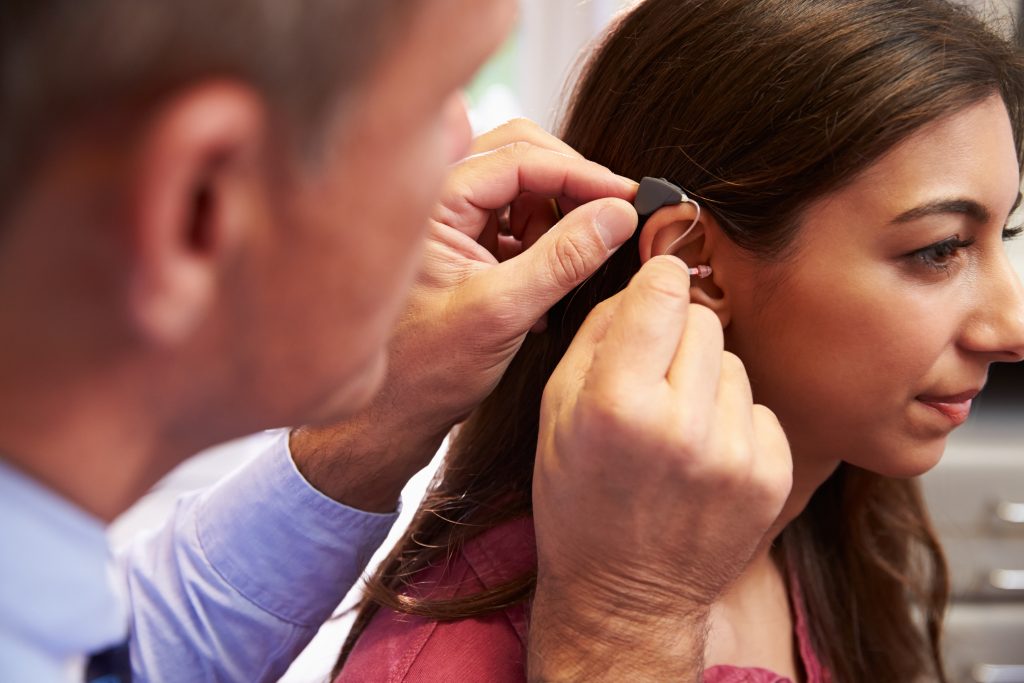While selecting the right hearing aid for your type and degree of hearing loss is important, having the device fit correctly is crucial for success. Below is a breakdown of what goes into a hearing aid fitting appointment and why this is one of the most important steps in the treatment process.
Types of Hearing Loss
Hearing aids can help those with wide degrees of hearing loss, from mild to profound, but are only useful for treating specific types of hearing loss. There are three classifications of hearing loss.
Conductive hearing loss occurs when there is a problem preventing soundwaves from moving through the outer or middle ear. This type of loss is often treated with medication or surgery.
Sensorineural hearing loss occurs when there is a problem within the inner ear or auditory nerve. This type of hearing loss is usually treated with hearing aids. Those with profound hearing loss may benefit from the use of a cochlear implant.
Mixed hearing loss occurs when there is a problem in both the outer or middle ear and the inner ear. The treatment for this type of hearing loss usually requires the conductive hearing loss to be addressed first before a hearing aid can be useful.
Adjusting the Physical Fit
Your audiologist will first focus on making sure the hearing aid physical fits well in your ear.
For behind-the-ear and receiver-in-the-ear styles, a small tool will be used to measure the distance between where the earmold/receiver sits in the ear canal to the heading aid behind your ear. This tells your audiologist how much wire or tubing is needed to connect the two pieces of these models.
They will then need to take a mold of your ear if your hearing aid requires a custom earmold. Using a quick-dry silicone substance, your audiologist will take an impression to be used as a mold. Some models use an instant dome, which is made of soft silicone and fits most ear shapes.
With some slight adjustments, your hearing aid should be sitting comfortably in your ear.
Adjusting the Programming
After the physical fit has been worked out, your audiologist will work on fitting the sound settings. With an advanced software program, your audiologist can program your hearing aids to fit your unique hearing needs based on the results of your hearing tests.
Once the hearing aid has been programmed, your audiologist will conduct a hearing test to make sure the devices are amplifying sounds correctly. They will measure the difference between how you hear with and without the hearing aids and will use your responses to certain listening situations to make slight adjustments to the programming.
Adjustment Period
After you leave the office with your newly fitted hearing aids, your audiologist will recommend taking them out to try in the real world. You should make sure the amplification works well when speaking with family at the dining room table and when out to eat at Cowboy Star.
After a few weeks, you will be asked to return to the office for a follow-up visit. This is when your audiologist will make any adjustments based on the results of your adjustment period.
To learn more about what goes into a fitting appointment or to schedule a visit with a hearing aid specialist, contact San Diego Hearing Center today.